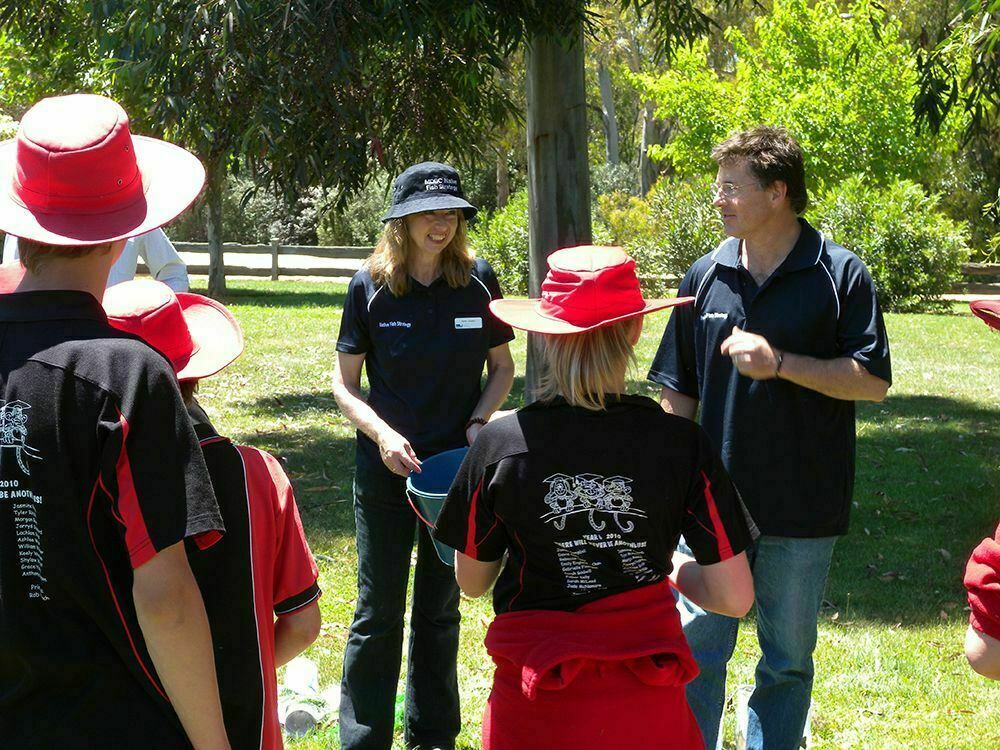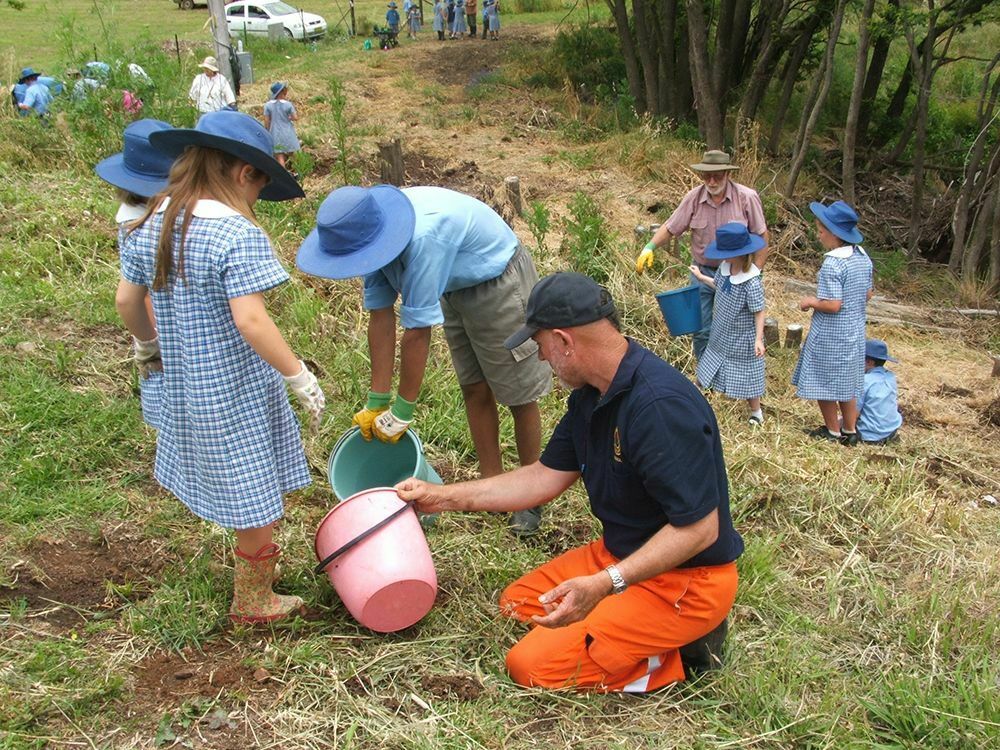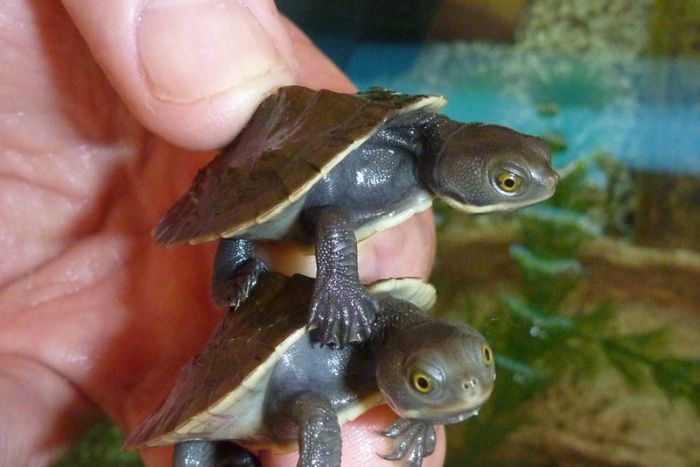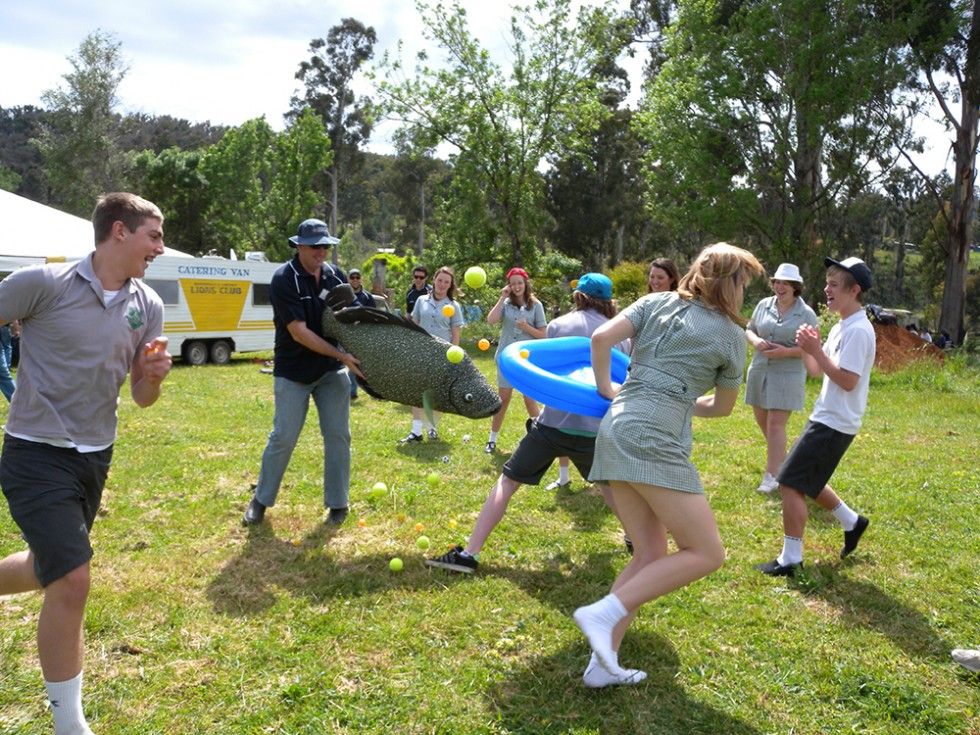The NFS recognised the critical need to effectively engage with the next generation within rural and regional communities across the Basin, since these children are the recreational fishers, environmentalists and landholders of the future. Engaging with students also provided a powerful link into the broader school community, including staff and parents. Information and activities specifically focussed on engaging with children were developed by the NFS. These included resources such as 3D fabric fish, fishway and carp cage models, role playing games, activities, stickers, posters and flyers. These resources were frequently used at field days, workshops and school events commonly called River Rallies or Freshwater Fish Circuses. The NFS aimed to link in with existing events wherever possible. This included World Wetland Day events, Waterwatch activities, Catch a Carp days, the Central Murray Environment Festival and Kids Teaching Kids events.


The NFS also participated in specific events with local communities and schools. In close consultation and collaboration with NFS Coordinators and the CST, many schools developed activities to increase awareness about river health, including focusing on local rivers, threatened fish species, pest fish species and water quality. Field trips were often undertaken to local rivers, where children participated in onground rehabilitation actions including planting locally native species, river clean up days, water quality monitoring and removal of pest species such as Eastern Gambusia. Schools also became closely involved in particular Demonstration Reaches and regularly applied these actions at their local reaches. NFS Coordinators developed sequential programs with some schools, with planned activities for each level, and including extended overnight expedition surveys. The annual Native Fish Awareness Weeks included many school activities such as forums, fishing clinics, native fish identification sessions, games, and hugely popular ‘yarning’ sessions from ‘The Connies’.


NFS Coordinators and Community Stakeholder Taskforce members also often gave presentations and talks to local school groups. As successful as these materials and events were at engaging and informing students across the Basin, it was recognised that the ad hoc nature of delivery meant impact was limited. It was soon realised that integrating information and activities into the standard school curriculum would have a longer term influence. The Sustaining River Life education package was therefore developed with assistance from ACT Waterwatch and RiverSmart Australia and in collaboration with school staff. This management, sustainability and environmental package provides a suite of support tools for staff and helps students develop awareness, knowledge and skills about waterways and the environment. Its activities and lesson plans had a strong link to Demonstration Reaches.
Case Study: The Turtle Shed, Milang

The Milang campus is a primary school located on the boundary and with a view of Lake Alexandrina in South Australia. In 2008, the water levels in the lake receded to low levels with salinity levels increasing. Due to the rising salinity levels numerous Murray short-necked and long-neck turtles were discovered laying on their back with large clumps of tubeworm coral and unfortunately dying. The students at the Milang Campus collected the turtles chipped and scraped the coral off and transferred the turtles back to freshwater.
To build on this success and spread the good work, the Milang campus also wanted to support the recovery of native fish. The turtle shed included saving the Turtles, but also with the support of the NFS Coordinator and CST member an education shed with threatened and protected species such as Murray Cod, Catfish, Gudgeon, Southern Purple Spotted Gudgeon, Southern Pygmy Perch and Silver Perch. The turtle shed highlighted the issues and impacts of low water levels of the Lakes and how communities can help support native fish. The Turtle shed included introduced fish such as Common Carp, Redfin, Mosquito Fish to educate the community the impact of these species to the community. The Turtle shed is open to the community and general public during school holidays and schools from all around Australia visit the Turtle shed for educational purposes. The school has won many prises for their environmental education including winning 50,000 from the National Australia Bank Schools First Award. They have also attended numerous environmental educational events around Australia.
